Abstract
1. Methods are presented for the calculation of rates of synthesis or loss, mean transit time and total body pool of compounds from specific-radioactivity curves, without assuming a multicompartmental model and without fitting the data by exponential expressions. The methods apply to the steady state after either single injection or continuous infusion of a labelled compound. 2. The use of irreversible and reversible tracers and the effects of recycling of carbon on the estimations of the parameters of glucose metabolism are discussed. Methods for quantitatively determining recycling of glucose carbon by the use of glucose doubly labelled with 14C and 3H are presented.
Full text
PDF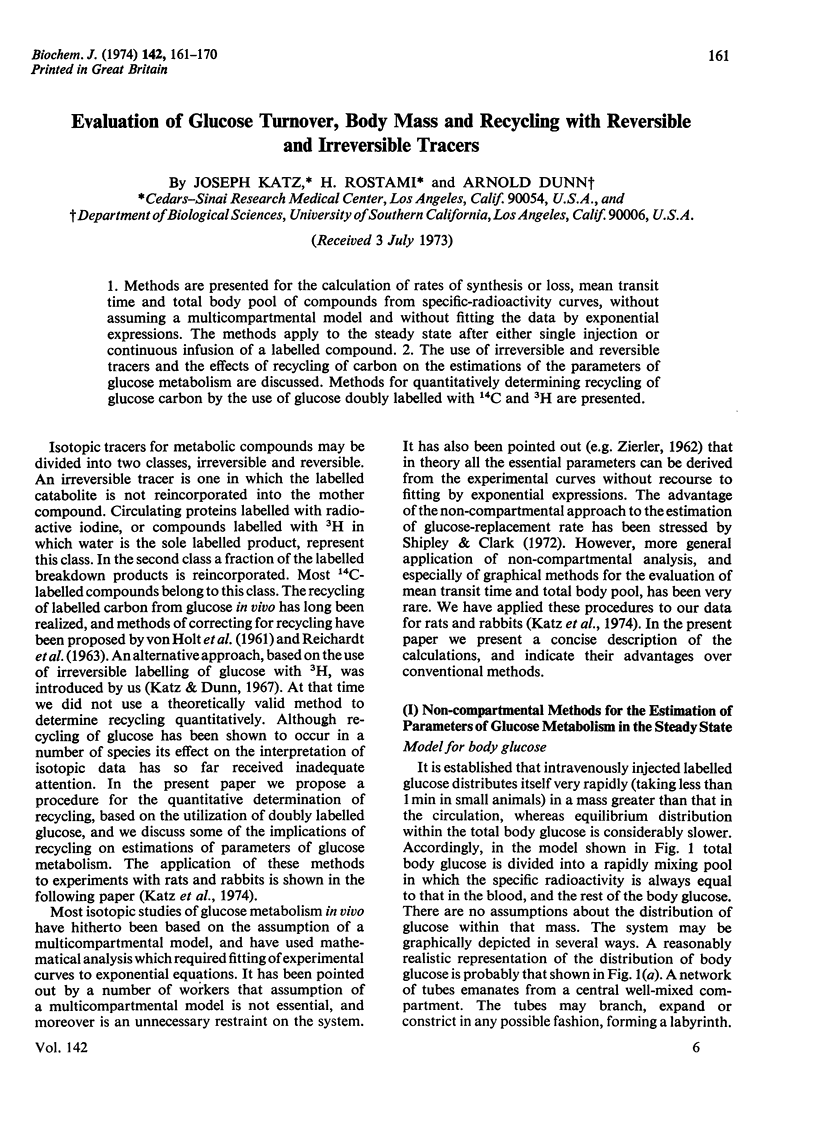


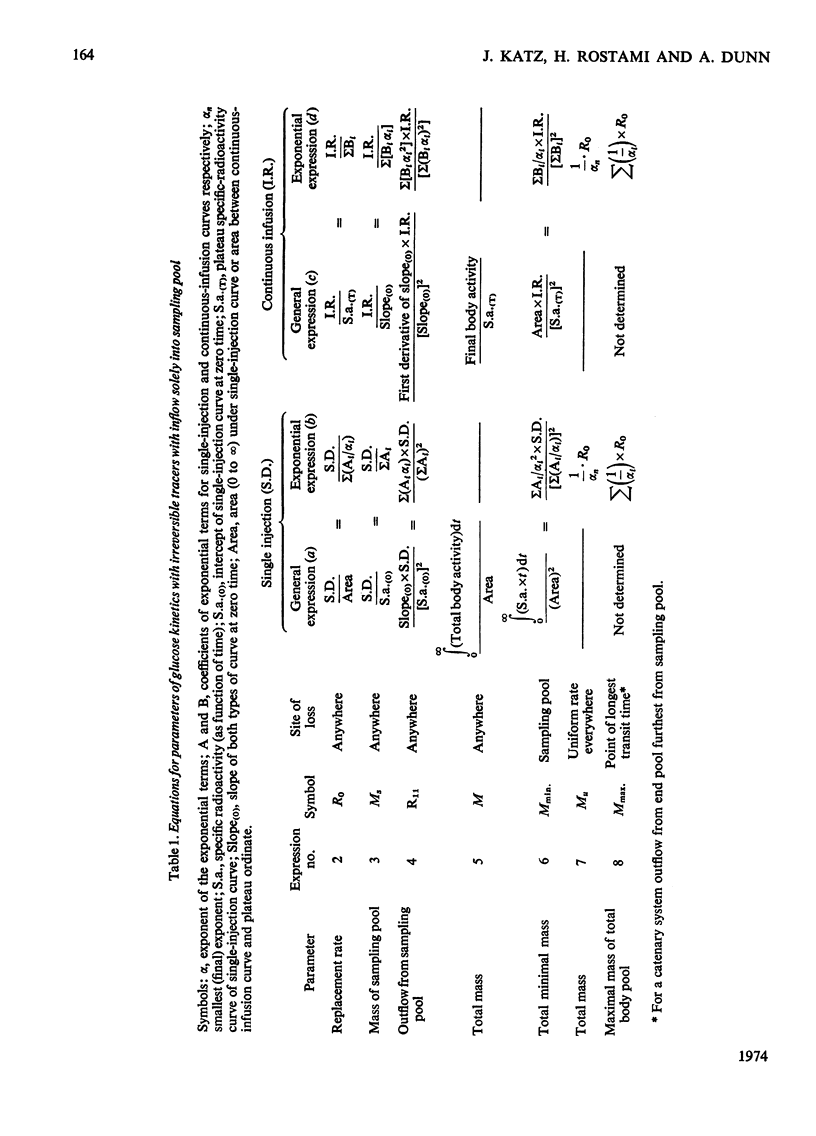
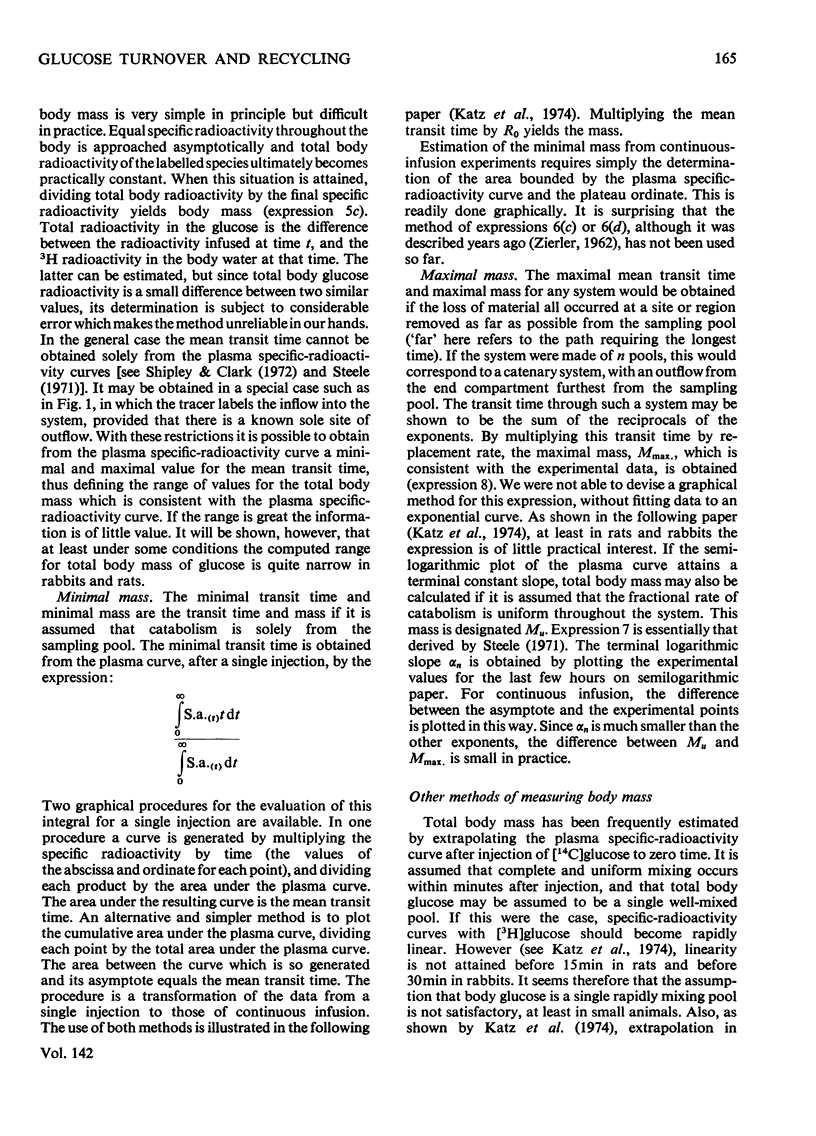
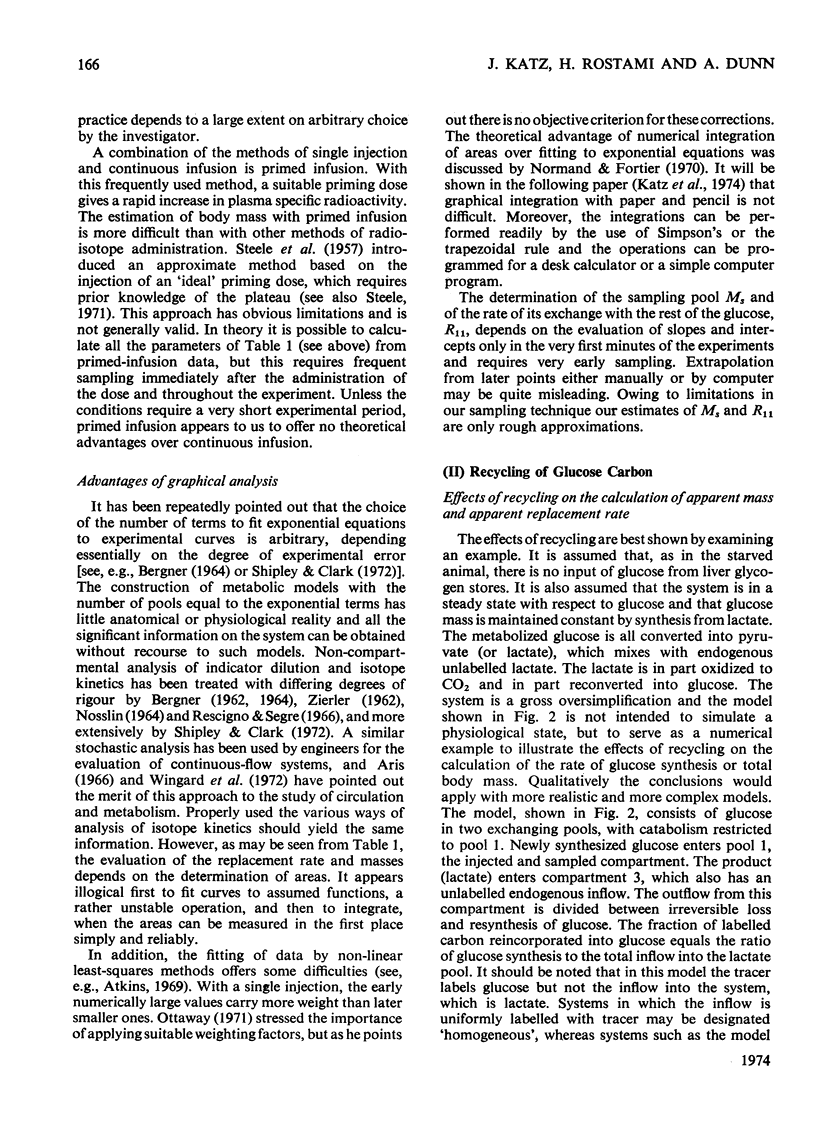
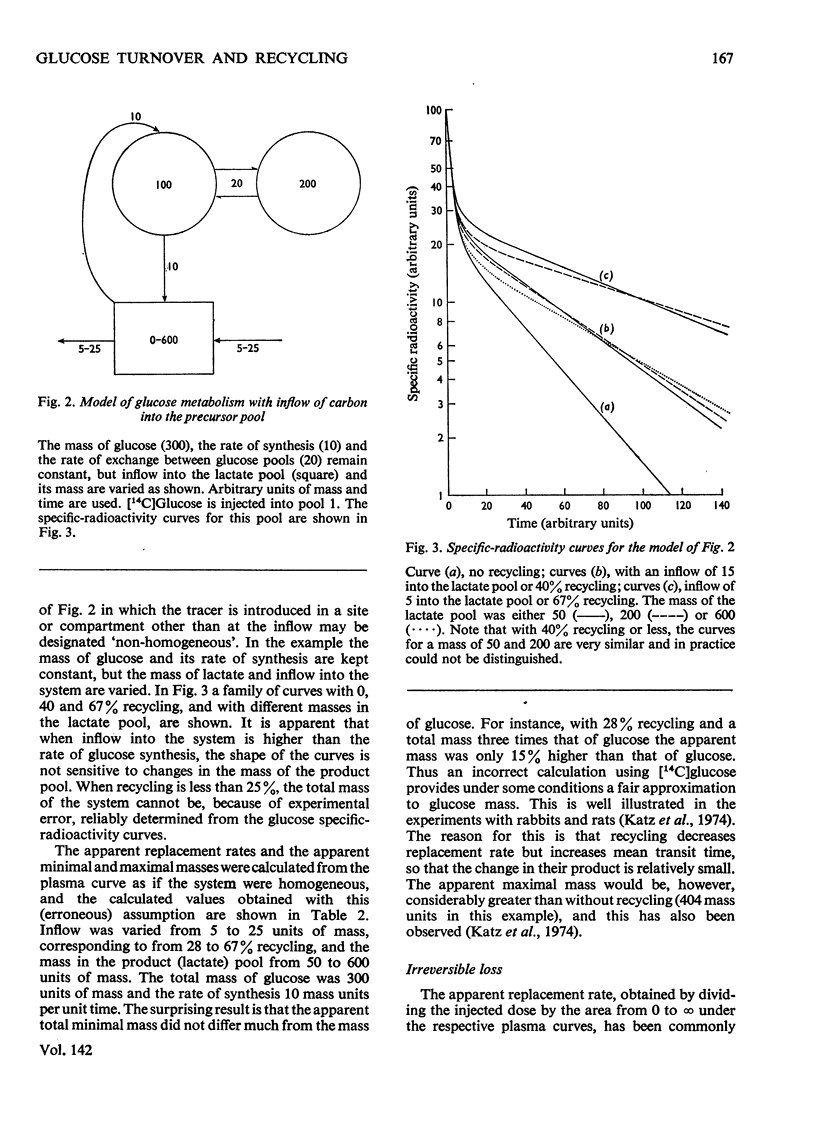
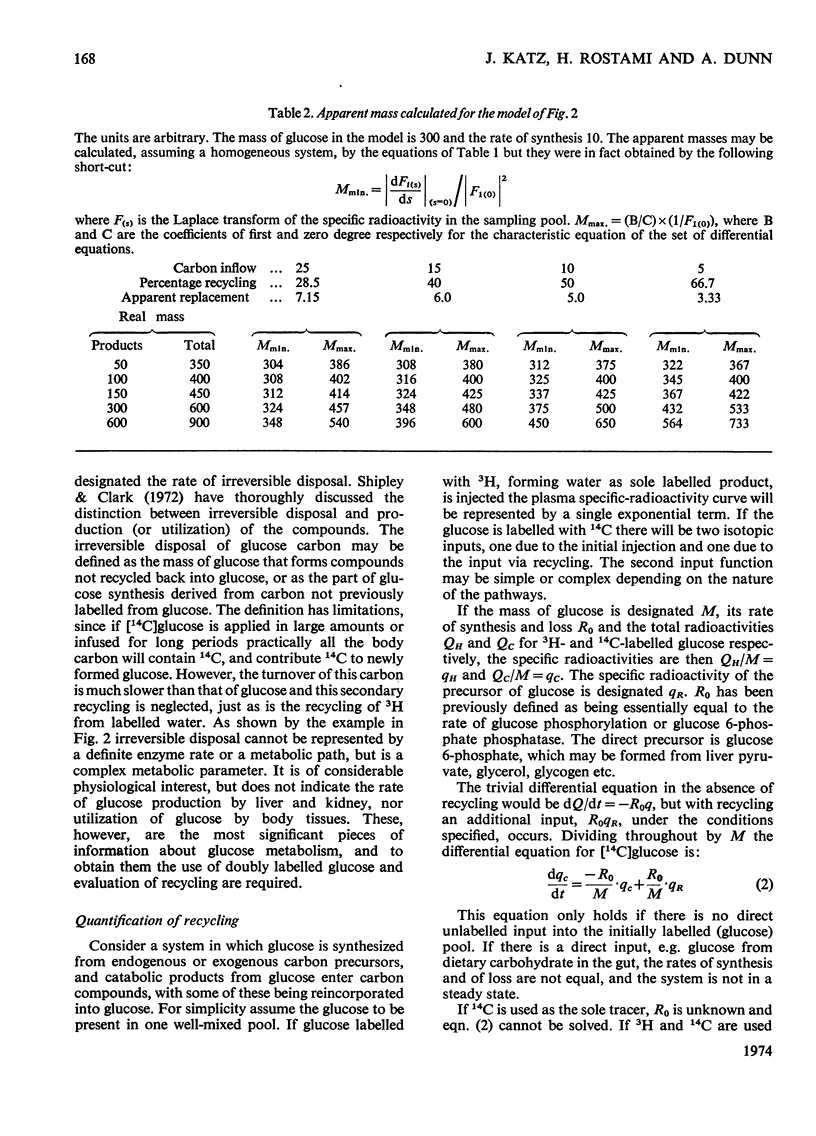
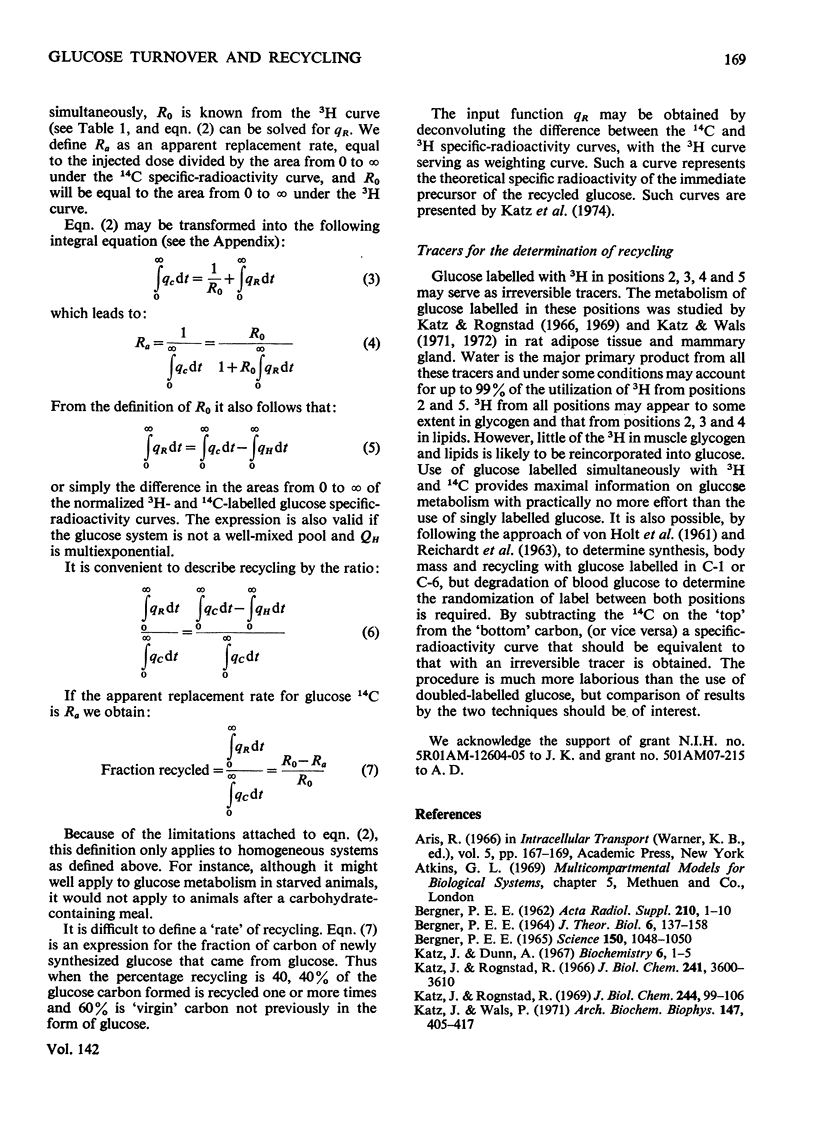
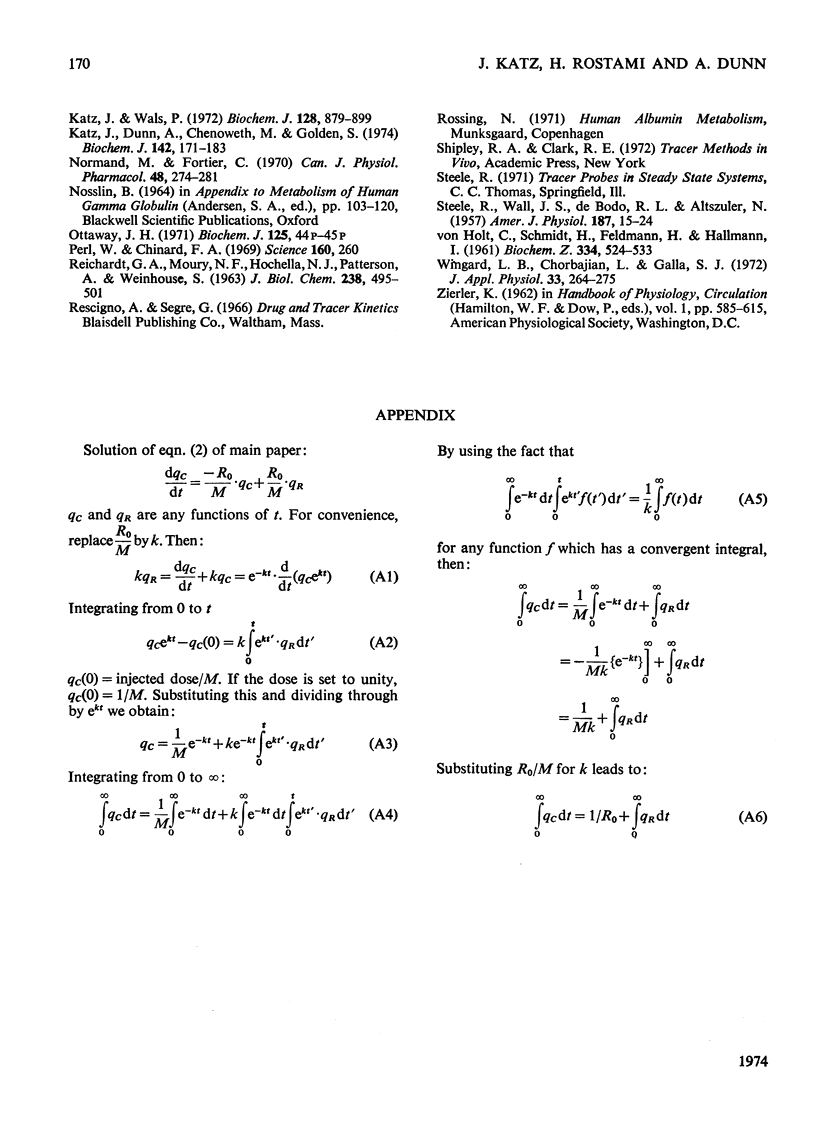
Selected References
These references are in PubMed. This may not be the complete list of references from this article.
- BERGNER P. E. The significance of certain tracer kinetical methods, especially with respect to the tracer dynamic definition of metabolic turnover. Acta Radiol Suppl. 1962;210:1–59. [PubMed] [Google Scholar]
- Bergner P. E. Exchangeable Mass: Determination without Assumption of Isotopic Equilibrium. Science. 1965 Nov 19;150(3699):1048–1050. doi: 10.1126/science.150.3699.1048. [DOI] [PubMed] [Google Scholar]
- Bergner P. E. Tracer dynamics and the determination of pool-sizes and turnover factors in metabolic systems. J Theor Biol. 1964 Mar;6(2):137–158. doi: 10.1016/0022-5193(64)90025-6. [DOI] [PubMed] [Google Scholar]
- Katz J., Dunn A., Chenoweth M., Golden S. Determination of synthesis, recycling and body mass of glucose in rats and rabbits in vivo 3H-and 14C-labelled glucose. Biochem J. 1974 Jul;142(1):171–183. doi: 10.1042/bj1420171. [DOI] [PMC free article] [PubMed] [Google Scholar]
- Katz J., Dunn A. Glucose-2-t as a tracer for glucose metabolism. Biochemistry. 1967 Jan;6(1):1–5. doi: 10.1021/bi00853a001. [DOI] [PubMed] [Google Scholar]
- Katz J., Rognstad R. The metabolism of glucose-2-T by adipose tissue. J Biol Chem. 1969 Jan 10;244(1):99–106. [PubMed] [Google Scholar]
- Katz J., Rognstad R. The metabolism of tritiated glucose by rat adipose tissue. J Biol Chem. 1966 Aug 10;241(15):3600–3610. [PubMed] [Google Scholar]
- Katz J., Wals P. A. Effects of phenazine methosulfate on glucose metabolism in rat adipose tissue. Arch Biochem Biophys. 1971 Dec;147(2):405–418. doi: 10.1016/0003-9861(71)90396-1. [DOI] [PubMed] [Google Scholar]
- Katz J., Wals P. A. Pentose cycle and reducing equivalents in rat mammary-gland slices. Biochem J. 1972 Jul;128(4):879–899. doi: 10.1042/bj1280879. [DOI] [PMC free article] [PubMed] [Google Scholar]
- Normand M., Fortier C. Numerical versus analytical integration of hormonal disappearance data. Can J Physiol Pharmacol. 1970 May;48(5):274–281. doi: 10.1139/y70-046. [DOI] [PubMed] [Google Scholar]
- Perl W., Chinard F. P. Occupancy principle: nonidentity with mean transit time. Science. 1969 Oct 10;166(3902):260–260. doi: 10.1126/science.166.3902.260. [DOI] [PubMed] [Google Scholar]
- STEELE R., WALL J. S., DE BODO R. C., ALTSZULER N. Measurement of size and turnover rate of body glucose pool by the isotope dilution method. Am J Physiol. 1956 Sep;187(1):15–24. doi: 10.1152/ajplegacy.1956.187.1.15. [DOI] [PubMed] [Google Scholar]
- Wingard L. B., Jr, Chorbajian T., Galla S. J. Concepts of residence time distribution applied to the indicator-dilution method. J Appl Physiol. 1972 Aug;33(2):264–275. doi: 10.1152/jappl.1972.33.2.264. [DOI] [PubMed] [Google Scholar]
- von HOLT, SCHMIDT H., FELDMANN H., HALLMANN I. [The metabolism of blood glucose]. Biochem Z. 1961;334:524–533. [PubMed] [Google Scholar]


